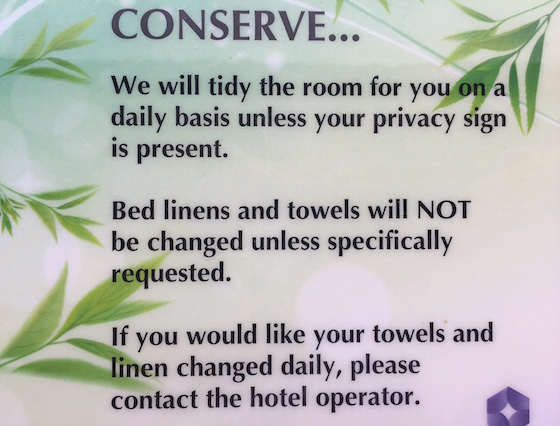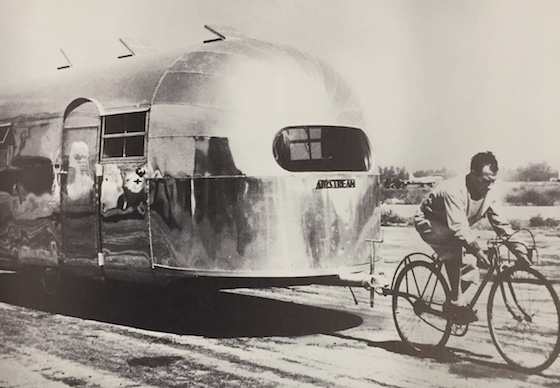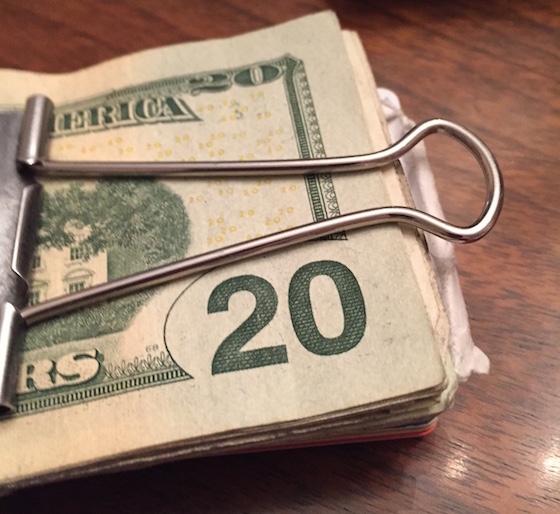That’s a photo of my money clip that I carry around – it’s an old binder clip that I started using ten years ago when my Tiffany silver money clip broke in half. Like most people, I hate losing money, and I hate getting ripped off. So to make sure that does not happen to you when buying an RV park, it is essential that you fully understand the way to measure and price RV parks using a “cap rate”, and understanding what that number value means to your investment.
What they are
A “cap rate” is short for “capitalization rate”, which basically means the rate of return on an investment of capital. The formula is a fraction: the net income from the property on top of the total cost of the property (debt and equity: the total sales price including any capital improvements you will make day one). For example, a property that generates a net income of $100,000 per year, and costs $1 million to purchase, has a cap rate of $100,000 divided by $1,000,000 which equals 10%. Cap rates have been the standard measure of a property’s rate of return for decades.
What they mean
The “cap rate” reflects the expected return on a property, and an thereby be used to rank properties by rate of return – to use them as a sorting mechanism. For example, if you will only deploy capital at a 9% cap rate or better, then there’s no point at looking at deals at 7% cap rates. This saves the buyer a lot of time. Similarly, you can model out the numbers for your investment based on a desired cap rate, and then go on the hunt for the cap rate that makes those numbers possible. Essentially, the cap rate is almost like the star system that hotels use – if you want a 4-star hotel, then you don’t look at the 3-star, but you are ecstatic when you get a 5-star for that same price. Once you have set your cap rate goal, anything that scores higher than your goal is even better.
Their impact on pricing and profit
Getting the cap rate wrong can be a disaster for your investment. If the going market cap rate is 10% and you buy at 9%, then you just overpaid by 10%. On a $500,000 RV park, that means you just lost $50,000. Even a small fraction of a percent means huge money. The moral is that you have to know the cap rates inside out for both the market as well as the property you are buying. The biggest mistakes we’ve seen on the part of RV park buyers has been to 1) buy at too low a cap rate 2) not take into account the additional capital needed to do capital repairs to the RV park, thereby not calculating the correct cap rate on the front end 3) failure to verify the income and expenses in due diligence, so as to pay too much for a property that has a lower cap rate than anticipated.
Equally important – and seldom discussed – is the concept of “spread
While cap rates are extremely important, there is another factor that is little discussed or understood, but is just as important to your investment success. And that’s a concept called “the spread”. This is not a discussion of cream cheese or peanut butter. “The spread” refers to the difference between the cap rate and the interest rate paid on the loan for the RV park. Since real estate is normally leveraged by a ratio of 5 to 1 (20% down), the “spread” between the cap rate and the interest rate on the loan is what really generates your “cash-on-cash” return on your down payment. For example, if you buy an RV park at a 10% cap rate and finance it with a loan at 6%, you have a “spread” of 4 points. A 4 point spread will yield about a 25% cash-on-cash return. Some people get confused and think that the cap rate is what they will get on their money. While that’s true if you pay all cash, that’s not true at all if you utilize leverage. So the real trick to having a high yield on your money is the “spread” as much as it’s the “cap rate”. And right now, the spreads are the highest that they’ve ever been in the RV park industry.
Future thoughts
RV park cap rates are at extremely attractive levels of 9% to 10% on average, Meanwhile, the “spread” is also the most attractive it has been in decades, thanks to some of the lowest interest rates in U.S. history. The bottom line is that it’s a great time to buy RV parks. So bone up on the cap rates and start making offers!




